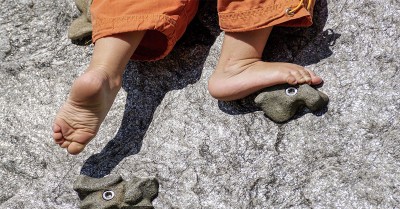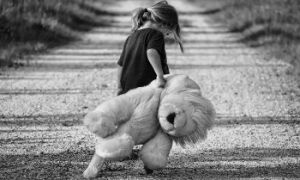Though as educators, we tend to value the well-being of children above everything else, there may be some merit in encouraging a bit of risky play in the early years.
Like with other developmental approaches, there are both pros and cons to the idea besides understanding limits of safety. Here is a bit more on risky play and how it can benefit children.
What is Risky Play?
Contrary to popular perception, risky play is not the same as dangerous play; instead it involves unstructured, usually outdoor contexts which invite children to play and experiment without knowing how it will end. In other words, more than revolving around hazardous actions, risky play is about letting kids push the limits of the known, predictable world and testing their environment. Naturally, the notion of risky play varies with age – so while whizzing down a playground slide or engaging in some rough and tumble with a mate may qualify as risky play for a toddler, an 8 year old will hardly bat an eyelid, preferring perhaps to climb the branches of a great oak or go biking on a new trail.
Examples Of Risky Play
So what exactly are risky play activities for children? Some key risky play activities include:
- Climbing up high objects for example trees, buildings, logs, stacking crates and planks, climbing frames, up hills
- Experiencing speed for example on a log swing, on a rope swing, sledges, toboggans, boats, swings, slides, bikes
- Using dangerous tools such as saws, knives, drills, hammers
- Being near risky elements such as fire or water
- Rough and tumble play with others for example, chase, play fighting, , imaginary weapon play
- Disappearing games, such as hide and seek, hiding in dens
Benefits Of Risky Play
Knowing The World
An essential developmental milestone involves children stepping outside the familiarity of home and family to cope with the uncertainties of the outside world. And this is exactly what risky play helps kids with. As children follow caterpillars through the grass and play hide and seek, they explore the world around them including hidden surprises and obstacles. They learn to handle elements like water, mud, sand, dry leaves as well as negotiate height, distance and speed – all of which provide valuable learning opportunities.
Honing Skills
Running, climbing, jumping in risky play is often more enjoyable purely because there is no adult standing on the side lines and hollering one to be careful. And whatever kids enjoy, they will do more of – which in this case brings rewards like physical strength and agility. Likewise, digging a sandpit or using old boards and tyres in the yard can make kids more creative as they come up with new play ideas or original solutions.
Emotional Intelligence
Among the most valuable lessons of risky play is the ability to face and overcome fears. When children climb a tree or wade across a shallow stream they are confronting their own uncertainties and digging deep into their emotional and physical resources to do something unusual. Whether or not successful, there are important lessons to be learnt here, ranging from self-confidence and group cooperation upon a job well done to strategy and resilience to give it another shot. Indeed realising that there will be occasional setbacks is an indispensable part of any emotional education. What matters is how one handles setbacks and risky play provides many such learning opportunities.
Appreciating Limits
The prime objection to risky play lies the potential for injury. This is why researchers studying risky play and its benefits recommend outdoor spaces with loose objects such as logs, tarp, ropes, crates, mud and perhaps even water. Indeed some experts also point out that healthy children without developmental issues usually have an inbuilt sense of the dangers they can and cannot handle; in truly hazardous situations, they would actually reach out for help. By implication then risky play teaches kids to identify real dangers and understand how much they can safely explore.
Risky play comes in a variety of shapes and forms, but it’s premise is always the same. Children learn about themselves and the world around them through an element of risk that is just enough to provide a challenge without being overly dangerous.
References:
- Risky Play For Children Why We Should Let Kids Go Outside and Play, Nature Play Of Things
- Risky Play, New York Times
- Examples Of Risky Play, Early Impact Learning



 As an Educator in Australia, your pay rate falls under the Children’s Services Award 2010. This award states the minimum amount that an employer can
As an Educator in Australia, your pay rate falls under the Children’s Services Award 2010. This award states the minimum amount that an employer can When working as a qualified Early Childhood Teacher (with a university degree) within a service, your rate of pay will come from the Educational Services
When working as a qualified Early Childhood Teacher (with a university degree) within a service, your rate of pay will come from the Educational Services When working as a Diploma Qualified Educator your pay rate is from the Children's Services Award 2010. This Award states your minimum rate of pay
When working as a Diploma Qualified Educator your pay rate is from the Children's Services Award 2010. This Award states your minimum rate of pay When working as a Cert 3 Qualified Educator, your pay rate is from the Children's Services Award 2010. This Award states your minimum rate of
When working as a Cert 3 Qualified Educator, your pay rate is from the Children's Services Award 2010. This Award states your minimum rate of Educational Leaders play a crucial role in their early childhood service by ensuring that the educational program aligns with best practices and supports the holistic
Educational Leaders play a crucial role in their early childhood service by ensuring that the educational program aligns with best practices and supports the holistic In early childhood education and care, ratios are more than a technicality—they are a frontline safeguard. Every child deserves responsive supervision, emotional connection, and developmental
In early childhood education and care, ratios are more than a technicality—they are a frontline safeguard. Every child deserves responsive supervision, emotional connection, and developmental With the new national child safety reforms kicking in on 1 September 2025, early childhood services like yours have a real opportunity to lead the
With the new national child safety reforms kicking in on 1 September 2025, early childhood services like yours have a real opportunity to lead the Here’s a comprehensive Mobile Phone and Smart Watch Policy tailored for early childhood education and care (ECEC) services in Australia, aligned with the latest 2025
Here’s a comprehensive Mobile Phone and Smart Watch Policy tailored for early childhood education and care (ECEC) services in Australia, aligned with the latest 2025 The Sea of Fish Challenge is a national initiative that invites children, educators, families, and communities to create and display fish artworks as a symbol
The Sea of Fish Challenge is a national initiative that invites children, educators, families, and communities to create and display fish artworks as a symbol Across the early childhood education and care sector, educators are sounding the alarm: current staffing ratios are insufficient to deliver safe, meaningful, and developmentally appropriate
Across the early childhood education and care sector, educators are sounding the alarm: current staffing ratios are insufficient to deliver safe, meaningful, and developmentally appropriate


